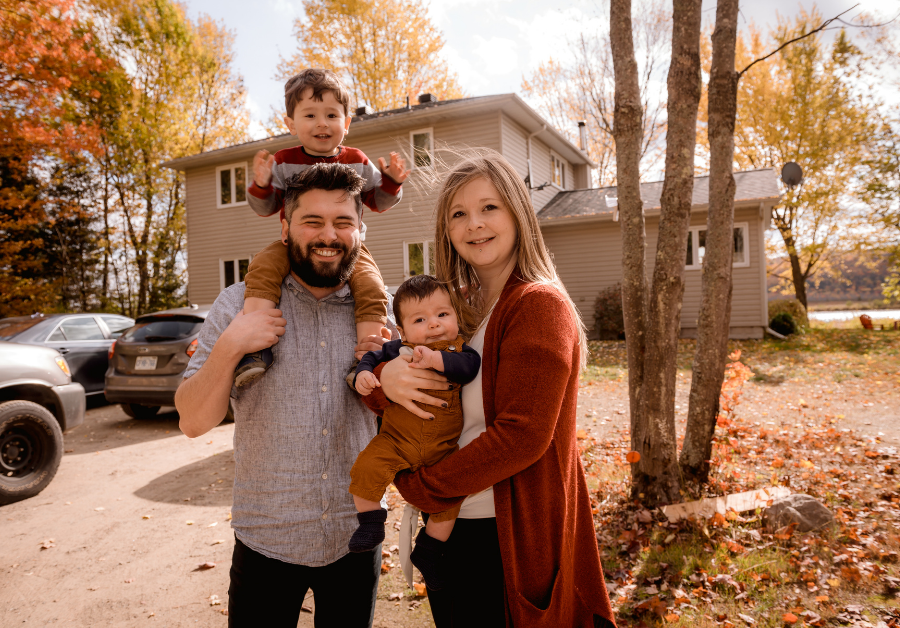“We’re going to show you why it’s not what you buy, but it’s how you pay for it and how using leverage can actually get you a higher rate of return on your money.”
Have you ever wondered how you can get the most out of your real estate investment? Today we will be using an example about how to leverage your money for real estate investing but know that this concept can be applied to any type of investment. So, keep that in mind as we go through todays example.
We’re going to show you how using the cash value in your life insurance can maximize the rate of return on your real estate investment. We have clients who invest in real estate who ask us, “ Why should we put money in a life insurance policy and earn a measly 4% when we can put money in a real estate deal and earn an infinite rate of return?”
We’re going to look at a real estate example, and we’re going to show you three different ways of acquiring the property; paying cash, financing with a traditional mortgage, and leveraging your life insurance cash value. We’re also going to show you how leveraging can actually get you the ultimate rate of return on your investment.
Here we have a $250,000 property and we are choosing to pay cash. After closing costs, we have $255,000 of our own money in the deal. We have no costs for financing and after taxes, insurance, and maintenance, we ended up with a gross rental income of $2,500 per month. We’re going to sell the property in 60 months and we’re going to assume that the value of the property appreciates at 2% per year over that ownership period. When we sell the property, five years later, the value of the property is $276,270. After we calculate everything that we received, we ended up with 13.08% as a rate of return on the real estate investment.
Now you may be wondering if the property is only appreciating at 2%, how did we get a 13.08% rate of return? Again, we have to evaluate the fact that we received $2,500 per month for 60 months. When you calculate that income versus the money we had in the deal, that’s how we can calculate a 13.08% rate of return. That’s a pretty good rate of return, but it can be so much better if we apply the laws of leverage to the purchase of the property.
Now, most people think that because we’re saving so much of interest by not financing, by not using a traditional mortgage, that this rate of return is as good as it gets. We’re going to show you why it’s not what you buy, but it’s how you pay for it and how using leverage can actually get you a higher rate of return on your money.
Next, let’s look at the classic 80/20 finance. We’re going to finance 80% of the purchase price, put 20% down and pay closing costs out of pocket. It’s the same deal. It’s the same building, same purchase price, and the same closing costs. The only thing we’re changing is the fact that we’re using other people’s money.We’re going to borrow 80%, $200,000 at 5% for 20 years. That means we have a mortgage that we didn’t have by paying cash and the mortgage is $1,320 per month. So how are we going to pay for that mortgage? We’re going to pay for it from the rental income, the $2,500 per month.
We’re going to evaluate this over the same 60-month period. We’re going to sell the property again in five years at 2% annual appreciation. We only have $55,000 of our own money in the deal. We’re also going to get the tax deduction because a portion of the mortgage is interest. So now we have less monthly income, $1180 versus $2,500, but we also have less of our money in the deal. When we sell the property, the fact that we have a mortgage doesn’t change the selling price of the building, it’s still $276,270. The only thing that changes is, when we sell the building, we have to pay off the mortgage. Our net cash out is lower. It’s $109,380.
Now you may be thinking with a lower cash out and a lower monthly income, it’s really surprising that the rate of return is actually higher when you finance, right? But you need to consider that we only have $55,000 in this deal. Our real estate investing clients, they understand leverage, and they would never pay cash for a building. If they have $255,000, they can buy five buildings instead of one by not paying cash. They understand leverage and that is the beauty of using other people’s money. Would you rather earn 34.37% on one property or on five?
Let’s take a look at the final scenario where we finance 80%, but we borrow against our life insurance policy for that 20% down payment. The only expense we have out of pocket is the closing cost of $5,000. We have the same property, $250,000 with the same closing costs of $5,000. But this time we’re going to mortgage the $200,000, just like in the last example. We have a 5% loan for 20 years and we have the same mortgage payment. The difference is we’re going to take $50,000 against our life insurance policy. We’re also going to finance that at 5% for 20 years. Our total mortgage payment is actually going to be a little higher and our monthly cashflow is going to be a little lower.
When we sell the property for $276,270, after five years, our net cash out is $67,633 because we have to pay off the bank mortgage and the loan we took against our life insurance. But remember, we only had $5,000 of our own money in the deal. Looking at it, this is the ultimate leverage. When we calculate all the income that we received, plus the appreciation of the property, we end up with a rate of return of 245.87%. Now, you might be thinking that that’s a great rate of return and it surely is. But actually, this scenario is so much better because what we didn’t tell you is the fact that when we borrowed against our life insurance, our money was still continuing to earn uninterrupted compounding of interest at the rate of 4%. Additionally, we have a death benefit. So, we have so much more than we’re actually showing here, that we couldn’t and didn’t calculate into the rate of return.
This is why it’s not what you buy, but it’s how you pay for it that really matters. Leveraging can really increase your rate of return. We really illustrated that with these examples today, you know, conventional wisdom would have you believe that the less you pay the banks and finance companies and fees and interest charges, the greater rate of return you can earn. Today’s example really underscores the importance of having as little of your cash tied up in the deal as possible and how leveraging other people’s money can maximize the rate of return that you could earn on your money. Not to mention you still have control over all that money that isn’t tied up in the deal.





